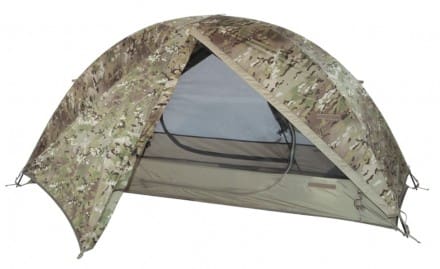Litefighter Systems LLC,* Roswell, Georgia, has been awarded a maximum $10,627,440 firm-fixed-priced, indefinite-delivery/indefinite-quantity contract for combat tents. This was a competitive acquisition with three responses received. This is a one-year base contract with four one-year option periods. Locations of performance are Mississippi and Georgia, with a July 12, 2023, performance completion date. Using military service is Marine Corps. Type of appropriation is fiscal 2018 through 2023 defense working capital funds. The contracting activity is the Defense Logistics Agency Troop Support, Philadelphia, Pennsylvania (SPE1C1-18-D-1065).
*denotes small business
Tags: Litefighter Systems



If you have to use one these are much better than the original ACU ones, much better airflow.
I love both of mine. They get tons of use.
I’ve always wondered why manufacturers didn’t use an expanded version of the camo pattern for tents and larger, flat surfaces. Isn’t one of the principles of camouflage to use larger patterns for larger objects? A pattern that works for clothing is too small for a tent fly of several square feet; at distance the details start to blend and the disruptive effect is lost.
Same goes for those “vehicle wraps” – an F150 is too big to cover with a hunter-flage pattern that works for a pair of pants…
Thoughts from the experts?
Well, a vehicle wrap isn’t meant to be functional in any except marketing… so there’s that.
On your first point, I think that once you factor in gear, comms, vehicles, and personnel any RON site won’t pass direct observation anyway so having something disruptive to mitigate that detection time, not detect-ability, is key. Noise discipline is usually out the window as well.
Of course, the best for large bivy sites and vehicles is, and will continue to be, and good mix of site selection, prep, and netting. Maybe some large doses of krylon on the vehicles, generators, and whatnot.
Desert Tan is the default jack-of-all/master-of-none pattern for most vehicles expected to fight in arid areas.
The three color “Woodland” scheme was developed by the Bundeswehr as a very effective central European camouflage. It became a uniform pattern for most European and NATO members.
The US used to have many. many patterns under the MERDC scheme but several factors led to its demise: 1) the logistics of constant repainting to match the seasons 2) the introduction and toxicity of CARC 3) the fact that the MERDC schemes served as an target identifier for US vehicles. “Is that a German, US, or British M-109?” Hmm…who does Ivan target?
Finally, the Six S of Camouflage: Sound. Sight, Silhouette, Surface/Shine. Shape, Smell, Smoke.
We’ve come a long way in the technical aspects of individual camouflage but have lost much of operational art with 18 years of COIN.
The Lightfighter tent has been a standard issue item for everyone from CIF for the California Army National Guard since around 2012/2013. Originally had the ACU and TAN ones issued. Now we are issued the OCP/Multicam ones. Each one has had minor adjustments improving the design such as adding internal storage pockets big enough for items like flashlights, glasses, or cell phones.
The tents are great especially since they offer enough room on either side to store your gear (ruck, IOTV, assault pack, commo) under the rain fly so it doesnt get soaked. Also being able to attach a Velcro name tape to the outside of the rain fly makes it easy to locate someone in the middle of the night without waking the whole unit.